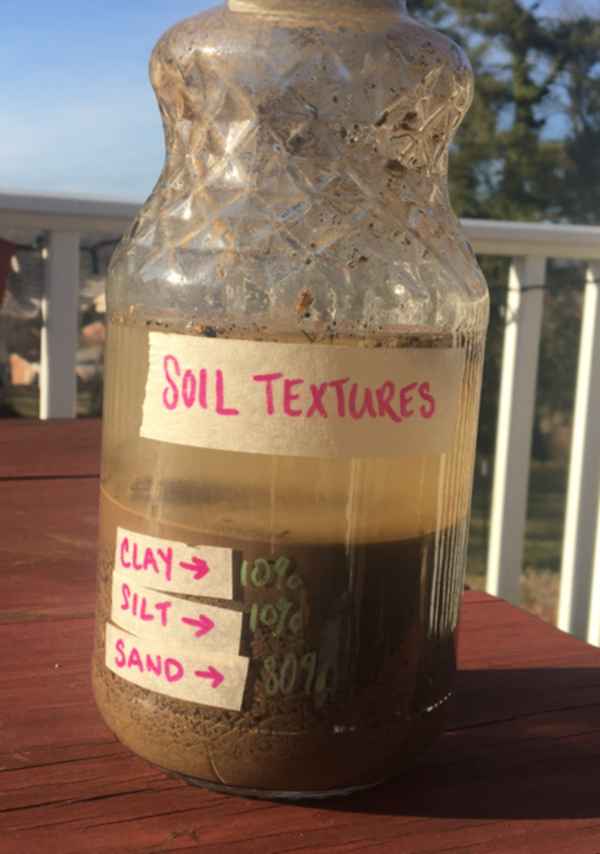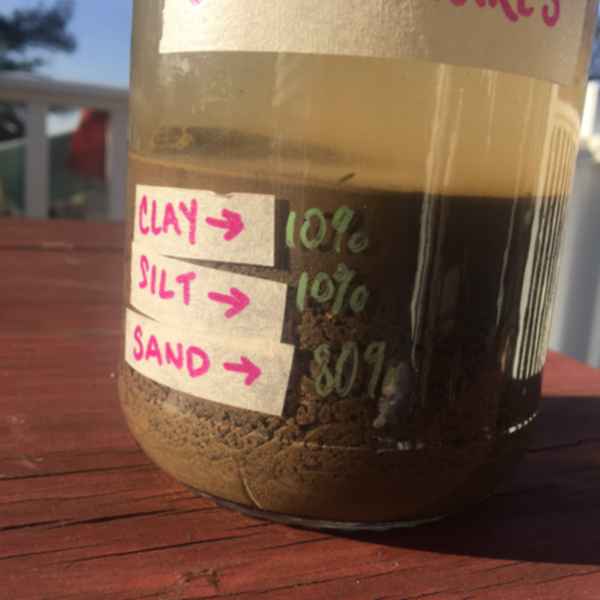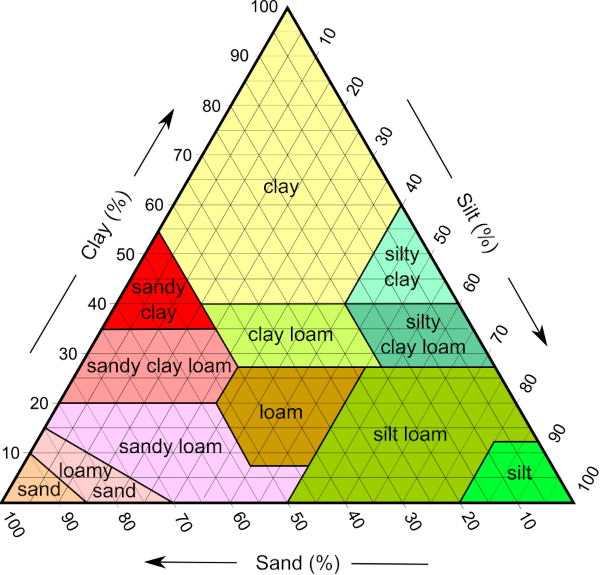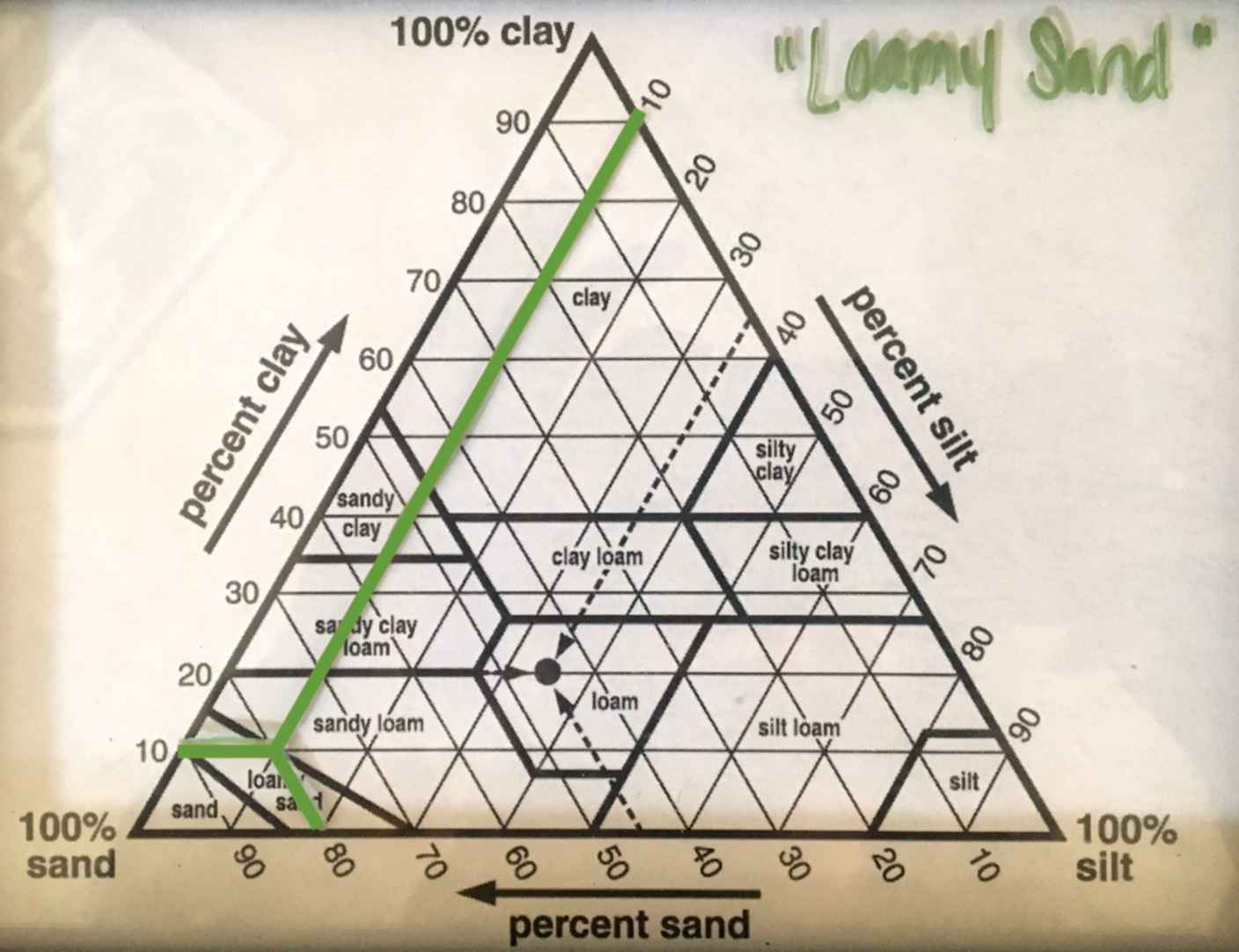← The Journal
Soil Texture Triangle
Soil is partially comprised of a collection of three minerals: silt, sand, and clay. The proportion of each of these minerals can be classified into a soil texture type which determines how the soil responds and behaves. Each mineral has its benefits and challenges, like the ability to hold onto nutrients and water or how quickly it does or doesn't drain after a heavy downpour. Knowing what kind of soil you're gardening with can help a great deal in promoting plant health.
Soil Particles
Sand is the heaviest and largest particle, then silt, then clay. You can view a grain of sand with the naked eye, but you’d need an electron microscope to see a clay particle. The proportion of each of these within the soil is what determines the overall texture.
Determing your soil texture is quite simple (and fun) using the Soil Texture Triangle method.
Setup your soil jar

- Get a quart-sized mason jar or recycled glass jar of around the same size
- Scoop 1 cup of dry soil from your garden. Remove any sticks, rocks, or plant material
- Pour soil into the jar and fill with water
- Replace lid and agitate jar so that soil and water are mixed thoroughly
- Leave jar untouched on counter for 12-24 hours or until the soil has settled completely.
Calculate the percentage of each layer
- Once jar contents have settled take a ruler and measure the total thickness of all three layers. Write it down.
- With the same ruler measure the thickness of each layer individually. Write them down.
- Divide the thickness of each layer by the total thickness to get the percentage of each.

Determine soil texture type

- Using a soil texture triangle like the one above find the percentage of each layer. Sand is along the bottom; clay on the left; silt on the right.
- Find the point in which each of these intersect to determine your soil texture type

Understanding the results
Loam is made up of a near equal amount of each sand, silt, and clay and is the easiest of all of the texture types to work with. Roots can grow freely and it holds a moderate amount of water while still adequately draining. However, very few soils fall into this golden realm. The remaining options all have their own unique benefits and challenges.
→ Coarse-textured soils: sand, sandy loam, loamy sands
- Ability to hold water and nutrients: low
- Drainage and infiltration: high
- Leaching: high
- Aeration: good
→ Medium-textured soils: loams, silt loams, silts
- Ability to hold water and nutrients: moderate
- Drainage and infiltration: moderate
- Leaching: moderate
- Aeration: moderate
→ Fine-textured soils: clay, silty clay, sandy clay, clay loam, silty clay loam
- Ability to hold water and nutrients: high
- Drainage and infiltration: slow
- Leaching: low
- Aeration: poor
source: Soil Texture Types Chart
Once you understand the texture the next step in better understanding your soil is to send a soil sample to a lab for testing. Macronutrients, micronutrients, pH, cation exchange capacity (CEC), and organic matter are other equally as important aspects of soil quality and plant health, and this is where soil testing is key. Contact your nearest extension agency for testing information.
